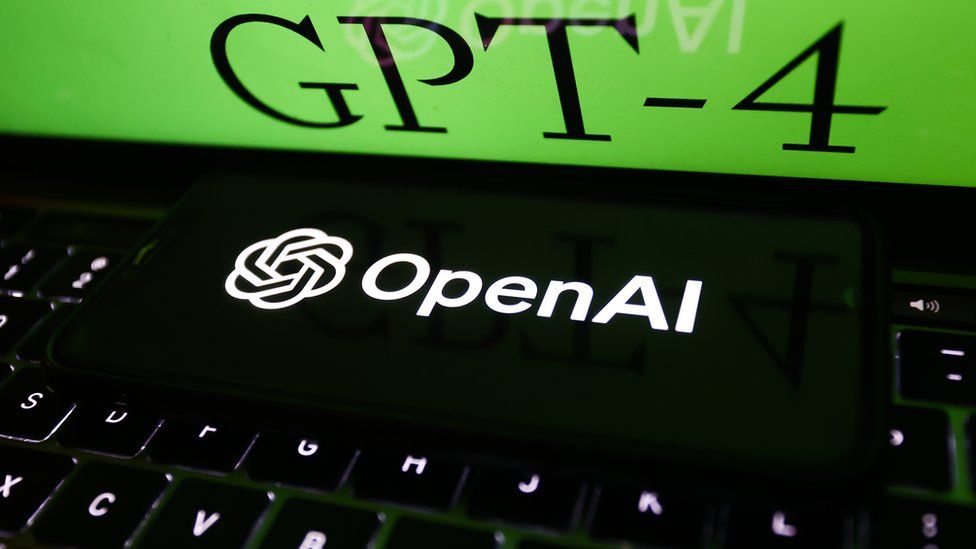Get ready to have your mind blown! The incredible GPT-4 is making waves with its expanded context window, capable of recalling a mind-boggling 50 pages of content – five times more than the original GPT-4 and eight times more than the previous GPT-3. This contextual information is what the AI utilizes to generate new text. And with such a massive memory, GPT-4 can sidestep the pitfalls of smaller models that quickly forget crucial details, leading to unpredictable and off-topic responses. It’s a game-changing development that’s sure to have a significant impact on the future of AI-generated text.
With an expanded memory, GPT-4 is expected to demonstrate improved conversational abilities, facilitating prolonged dialogues lasting several hours or days. As the initial instructions provided to the model can remain in its memory for an extended period, it is less likely to derail or exhibit erratic behavior.
In simple words, it is a multimodal model that can process both picture and text inputs and forge text outputs. GPT-4 can achieve human-like performance on several professional and academic benchmarks. But it is still inferior to humans in real-world scenarios. Nonetheless, OpenAI boasts that GPT-4 has surpassed its predecessor, GPT-3.5, with a 40% increase in accuracy when it comes to producing factual responses on their internal evaluations.
Developers can now sign up to utilize GPT-4 for their applications. While paid subscribers to OpenAI’s ChatGPT Plus will have exclusive access to the model. In addition to text generation, GPT-4 can analyze images and provide descriptions or answer related questions, demonstrating its versatility in various domains.
Also Read- How To Create Your Own AI Animated Character With Voice – A Step-By-Step Guide

Major Differences Between the GPT-3 and GPT-4
#1. Larger Memory
GPT-4’s size and power surpass GPT-3 by a significant margin, with 170 trillion parameters as opposed to GPT-3’s 175 billion parameters. This enhanced capacity enables GPT-4 to handle text processing and generation tasks with higher precision and fluidity.
Also Read- How To Get Access To GPT-4 Right Now!
#2. Multimodal- Accept Both Images & Texts
A remarkable advancement from its predecessor, GPT-4 is an extensive multimodal model that can acquire both text and image inputs and induce text outputs. This feature facilitates to process of graphical inputs. This includes images of charts and worksheets, which was not possible with the earlier model. In contrast, while GPT-3 has the capability to process plain text input and generate natural language text and code output, GPT-4 is not yet capable of producing media solely from textual input.
Also Read- How To Use ChatGPT On Your Apple Watch
#3. More Factual Responses
On OpenAI’s internal evaluations, GPT-4 has shown a 40% higher likelihood of generating factual responses than GPT-3.5. Additionally, GPT-4 is characterized as more imaginative and less inclined to fabricate information compared to GPT-3.
Also Read- How To Build Your Own AI Chatbot With ChatGPT API
#4. Expanding Language Capabilities with GPT-4
English dominates the AI field, including data, testing, and research papers. However, the power of large language models extends to other languages, and they should be accessible in those languages too. GPT-4 is moving in this direction by proving its ability to answer thousands of multiple-choice questions accurately in 26 languages, from Italian to Ukrainian to Korean. Although its proficiency is strongest in Romance and Germanic languages, it performs well across different language families.
Also Read- How To Access ChatGPT From Your Mac Menu Bar
#5. Capabilities Of the New GPT-4 And ‘Visual Inputs’
GPT-4 is a multimodal model that accepts image and text inputs and emits text outputs. Although it cannot output pictures, it can process and respond to the visual inputs it receives. This means that it can understand the context provided in the image and connect it to social understandings of language. Annette Vee who is a faculty member at the University of Pittsburgh who researches the relationship between computation and composition watched a demo in which the new model was instructed to determine what was hilarious about a comical image. ChatGPT wasn’t able to do that.
According to OpenAI, the potential applications of GPT-4’s ability to analyze and understand images. Specifically, it highlights the value of such technology for people who are visually impaired or blind. There is a mobile app called Be My Eyes. It helps users interpret their surroundings by describing the objects around them. By incorporating GPT-4 into the app, it can now generate descriptions with the same level of context. And understanding as a human volunteer.
Furthermore, in the demonstration, an OpenAI representative sketched a simple website and fed the drawing to GPT-4. GPT-4 was then able to analyze the image and write the code required to produce a website that looked similar to the sketch. According to Jonathan May, a research associate professor at the University of Southern California, the resulting website was “very, very simple” but worked excellently.
Also Read- Use The AI-Powered Bing Chatbot on The New Bing Search Engine
Limitations Of GPT-4
#1. It ” Hallucinates”
The passage highlights both the capabilities and limitations of GPT-4, the latest version of the GPT language model. While GPT-4 has cutting-edge capabilities in interpreting and generating both text and images, it still has some limitations. One of the most significant limitations is its tendency to “hallucinate” facts and make reasoning errors. This means that GPT-4 may generate outputs that are not entirely accurate or steadfast.
Nonetheless, GPT-4 has made progress on the TruthfulQA benchmark, which tests the model’s ability to separate fact from fiction in a set of adversarially-selected incorrect statements. While GPT-4 is only slightly better at this task than its predecessor GPT-3.5, it shows significant improvements after RLHF post-training. However, the example given shows that GPT-4 can still miss subtle details, highlighting the ongoing need for caution when using language models.
Also Read- How To Use Bing AI With Siri On iPhone
#2. Lacks Knowledge after September 2021
While GPT-4 is a favorably competent language model, it has some limitations. Specifically, it lacks knowledge of events that transpired after September 2021, which is when the expansive majority of its pre-training data ends. This means that it may not have up-to-date information on present events or trends.
#3. Inability to Learn from Prior Experience
Additionally, the model does not learn from its experience, which implies that it may make the same blunders oftentimes. GPT-4 can sometimes make uncomplicated reasoning errors that do not seem to match its competence in many domains. It may furthermore be excessively gullible in accepting erroneous statements from a user.
Also Read- How To Use The AI-Powered Bing Chatbot on The New Bing Search Engine
#4. Mitigating Risks and Ensuring Safety with GPT-4
The developers of GPT-4 have been working on making the model safer and more aligned from the start. They have engaged with over 50 experts from different fields to test and evaluate the model’s behavior in high-risk areas. To reduce harmful outputs, GPT-4 includes an additional safety reward signal during training, which teaches the model to refuse requests for unsafe content. The developers have seen significant improvements in the model’s safety properties, but there is still a risk of bad behavior.
GPT-4 has the potential to affect society both positively and negatively, and the developers are working with external researchers to assess the potential consequences. They will be conveying more of their thoughts on the social and economic impacts of GPT-4 and other AI systems soon.
Also Read- How To Use ChatGPT With Siri On iPhone
#5. OpenAI Evals
OpenAI has made OpenAI Evals, a software framework for automated evaluation of AI model performance, open-source. It is a tool that helps evaluate models like GPT-4 and their performance on various benchmarks. This facilitates anyone to identify and apprise shortcomings in their models and also helps guide further improvements.
The software is open-source, indicating that anyone can use and modify it to implement custom evaluation logic. However, Evals also comprise templates for ordinary evaluation sorts, such as “model-graded evals,” which can be utilized as a starting point for producing unique evaluations.
Also Read- ChatGPT, Google Bard, Microsoft Bing- How They Are Similar But Yet Different
How to Gain Access To GPT-4?
GPT-4’s text input capability is available to ChatGPT Plus users via ChatGPT. OpenAI has announced that subscribers to ChatGPT Plus will have access to GPT-4, but there will be a cap on usage. The exact usage cap will be adjusted based on demand and system performance. However, OpenAI expects that there will be intense capacity constraints initially, though they plan to optimize and scale up their infrastructure over the next few months.
If there is high demand for GPT-4 usage, OpenAI may introduce a new subscription level for higher-volume usage. Additionally, they hope to eventually offer some amount of free GPT-4 queries so that non-subscribers can also try it out. If you are looking to Get Access to GPT-4 Right Now! Do check out our blog for further assistance.
Also Read- Microsoft Bing AI-Powered Chatbot: Everything You Need To Know

































